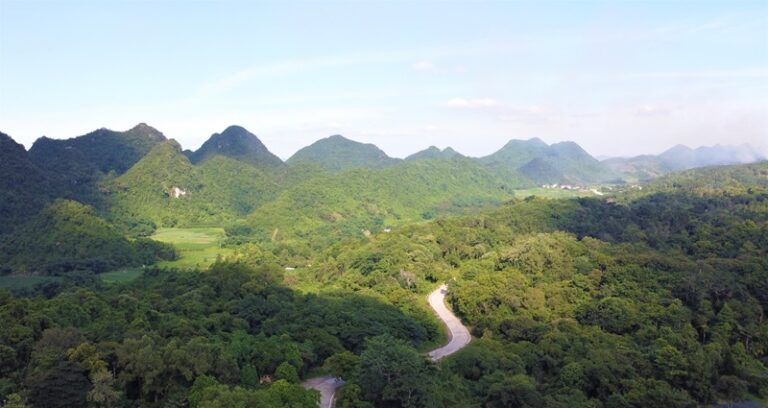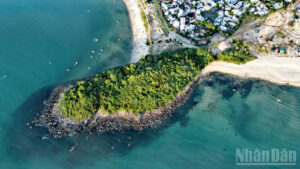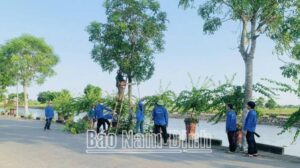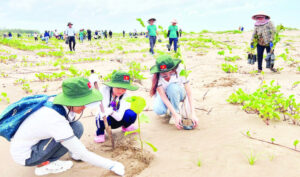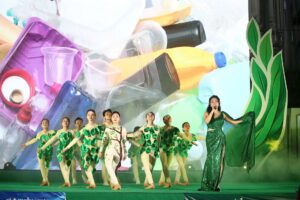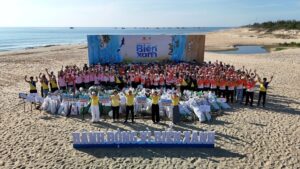I have been to Ca Mau Province many times, but only after staying at a homestay one night was I able to really discover the southernmost part of Viet Nam.
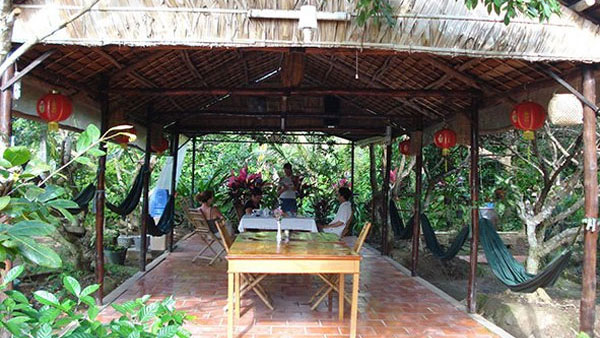
Real life: Tourists experiencing homestay in Ca Mau Province join the daily activities of the local people. — Photos dulichcamau.net
After spending nearly two hours in a canoe, we arrived at the southernmost tip of the country in U Minh Thuong National Forest. Welcoming us was the genial smile of villager Nguyen Van Nhuan.
We, visitors from the far north, were immediately impressed by the peacefulness of this rural area. Set amidst the vast waters and mangroves are little coconut leaf-roofed houses, decorated with beds of flowers and areca nuts in front.
It was already past noon and everyone was hungry. We were soon served freshly cooked food by our host. In the hut surrounded by water, we enjoyed well-known local specialties such as grilled ca thoi loi (mudskipper), a hotpot of country flowers and sour soup of ca ngat (eeltail catfish).
The food seemed to be more delicious when accompanied by the sweet local wine that was fermented from various fruits in the forest. We enjoyed the pleasant and cosy night, despite the heavy rain outside.
We were treated very warmly by our host Nhuan as if we were his distinguished guests. In the morning, he advised us to go fishing, spread the nets, hunt for crabs and catch mudskippers or cook the local food. Whenever we got tired, we could rest in hammocks and enjoy don ca tai tu, traditional music of southern Viet Nam.
Nhuan had served in the army before returning home to work as a farmer. He spent his life peacefully, growing plants and farming fish till 2013, when his family and four other families were sponsored by Sweden's SIDA organisation to launch community tourism and ecotourism. Funded with VND54 million (US$2,571), Nhuan built tents, dug ponds for fish farming and purchased boats to serve tourists.
In July the same year, his family welcomed their first tourists. Today, 50 to 70 visitors drop by his house each day. Some days there are so many tourists that he has to seek assistance from his relatives and purchase food from his neighbours.
Besides exploring the lifestyle of the local people, we also visited sacred destinations in Ca Mau Province, such as the national trig point GPS 0001, the symbol of the sailing ship heading to the ocean or the 21m-tall observatory.
We also took a motorboat ride under the leafy canopies of the forest to reach Khai Long Beach, renowned for its beautiful golden sand. Standing on the beach and seeing the vast sea and sky, we could see an indistinct Hon Khoai Island in the distance, looking like a ship riding the waves.
As soon as the weak sunlight started spreading across the river waters, the bird garden of farmer Tran Van Huong became lively with the chatter and flapping of flocks of birds returning home.
According to Nhuan, each host family that offers homestay services to tourists often has to manage more than 5ha of submerged forest. With its natural habitat and abundant food, the forest has sheltered several precious bird species for many years.
We had a stunning view of thousands of storks and little cormorants perched all over the mangrove forest from the observatory. Despite the variety of species, each lives in harmony and peace.
When night fell, we were all eager to join Nhuan in hunting for crabs and ba khia, a three-striped crab, for the next day's meals, after enjoying simple but delicious local dishes. It was necessary to take along electric torches and gloves because we could get hurt from crab attacks.
The best moment to hunt for ba khia is during low tide when the crabs come out of their holes to hunt for food. As soon as our boats stopped near a row of nipas, we discovered a crab as large as a human wrist that was dazzled by the light of the torch. We easily grabbed it. Otherwise, we would have had to block its hole to prevent its escape.
The further our boats ventured into the mangrove forest, the more ba khia came out in front of our eyes. The result of our two-hour trip was a basket full of crabs that were enough for us to prepare three dishes. The meat of ba khia is firm, sweet and aromatic because they eat the fruits of the mangrove forest. Mam ba khia or fermented salted crab is a well-known dish of southern Viet Nam that every tourist should try.
As it got darker, the tide started to rise, bringing with it a gentle breeze to cool the heat of the summer. When I finished hanging my mosquito net and laid down on my mattress, I heard my friends snoring, a sign of peacefulness and satisfaction after a very interesting day. The quietness of the forest gradually lulled me to sleep, with the promise of sweet dreams.



